Introduction to Polyhouse Farming: Nowadays, polyhouse farming has become one of the most popular greenhouses. Whether you’d like to enjoy healthier fruits and veggies in non-seasonal months or spike up your groceries business, polyhouse plays a vital role. But what exactly is a polyhouse? What are its benefits? Is a polyhouse just like a greenhouse, or is it completely different? Are you curious to know more about it? This blog will provide you with all the necessary information you would know about Polyhouse Farming. Let’s check out the merits of polyhouse growing and why you should switch from conventional farming to polyhouse farming.
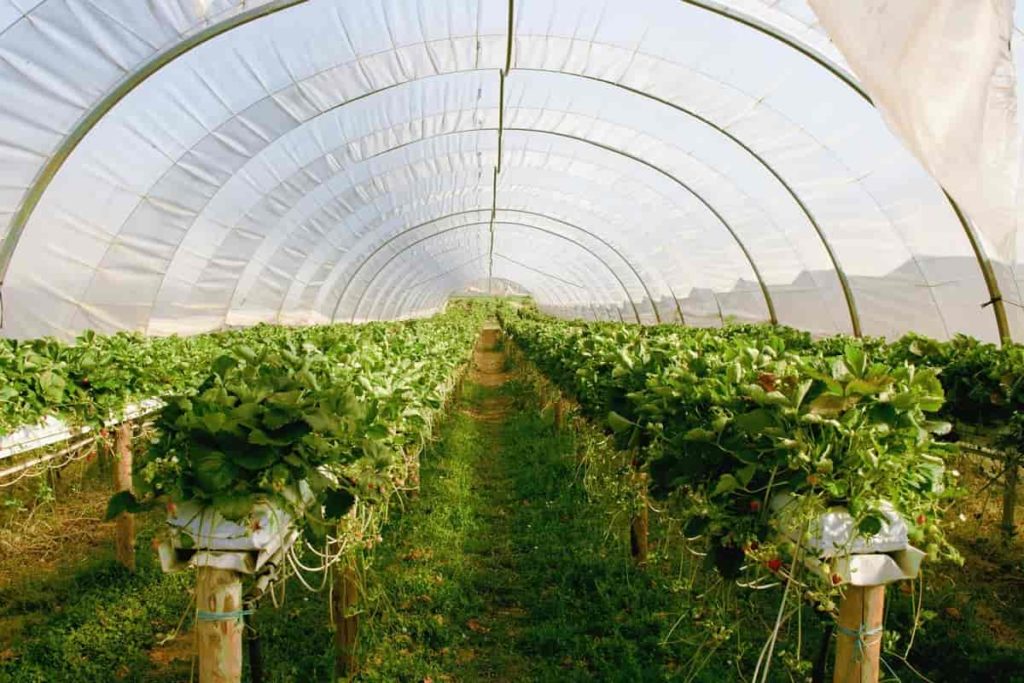
The process of raising various types of greenhouse is called Polyhousing. It’s performed in a controlled environment to produce healthy and high-quality food. In general, polyhouse farming began with the use of greenhouses. Polyhouse farming is one of the most innovative methods to produce healthy food. The craze of polyhouses is immense, and now, it’s widely used in large firms. Polyhousing has become one of the most profit-making businesses today date. If you can start your business, you can think of this once.
What is polyhouse?
Poly farming is an outsized greenhouse that uses glass & plastic poly film walls. In addition, business owners can use aluminum siding and sheathing instead of glass and plastic to save money. It grows plants and crops all season, especially in chilly winters. It’s no surprise to say that polyhouses are easy to build yourself. However, it’s mostly built by professional growers. In general, it can be built in two ways– One is using solid walls and the second with mesh coverings.
The skylights fit on the roof giving natural light inside the house. It even saves electricity during the winter season. At the same time, the walls give warmth at night because of their thickness. They’re efficient in offering adequate heat and sunlight during the winter season through polycarbonate or Lexan panels that are pre-installed. In most cases, Polyhouses are made from glass reinforced plastic in India. But why? Let me explain a few benefits of polyhouses made of glass-reinforced plastic.
- It has a high tensile strength
- It’s flexible and lightweight.
- You can easily get it on the market at a cheap rate.
In case you miss this: Amazing Gardening Ideas for Beginners
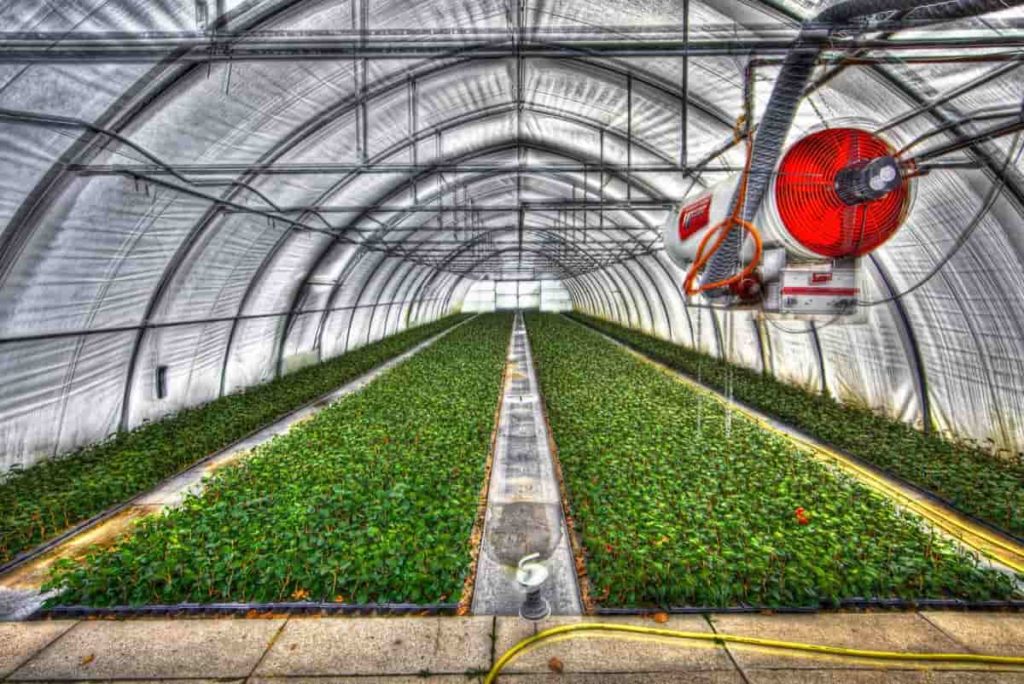
- When compared to steel, GRP is relatively savvy. Aluminum is another great choice for building a Polyhouse.
- Polyhouses are compact and super-advanced nurseries. They help farmers broaden the season in a cold climate for better yield. They protect the crop from adverse climatic conditions, pollution, and a lot more, allowing farmers to double their yield and profits.
- In addition, polyhouse protect plants from extreme temperatures. However, it likewise gives ideal developing conditions for healthy growth. The sun radiates through clear plastic boards the entire day without singing plants or seeds.
Polyhouse innovation and technology
- Poly agriculture, or vertical farming, is an encased nursery that considers all-year cultivation. Usually, the crops are filled in upward stacked levels inside.
- The polyhouse configuration consistently provides daylight and outside air to the plant’s expanding yields. A few things to consider before constructing a polyhouse are materials, choosing the right crops, and its purpose of growing.
- Normal models incorporate salad greens (like lettuce), tomatoes, peppers, and cucumbers.
In case you miss this: Top 30 Fast Growing Vegetables at Home
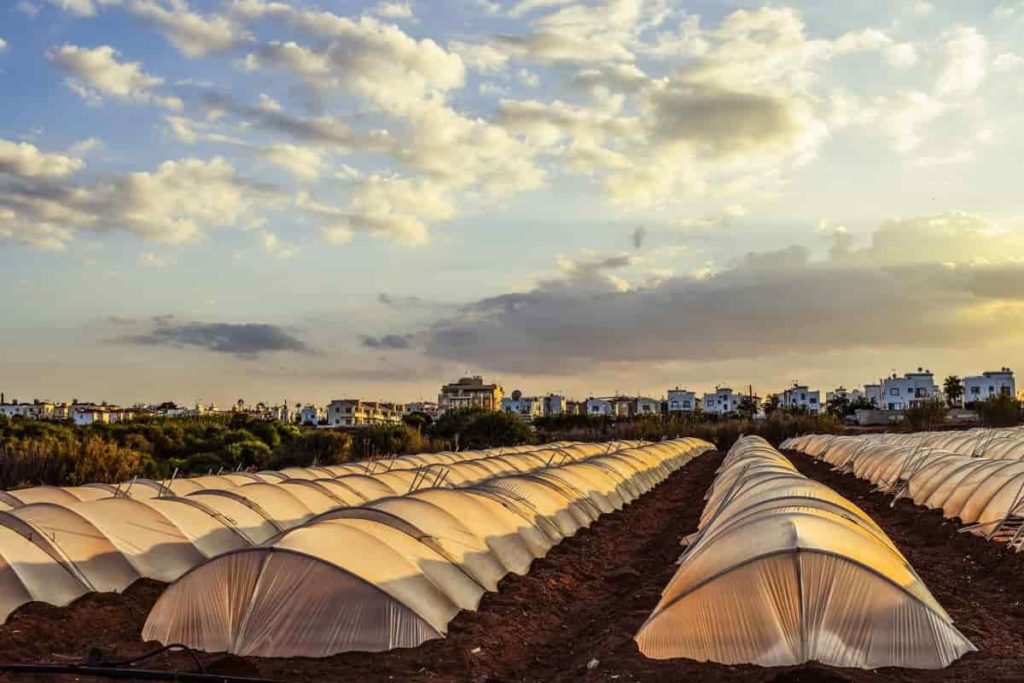
Polyhouse v/s Greenhouse
The most significant difference between a polyhouse and a greenhouse is affordability. Polyhouses are more affordable than nurseries. Polyhouse can be constructed using simple and minimal materials. So, you can save money by utilizing plastic rather than glass for your design. Dive more deeply into Polyhouse and Greenhouse. Which one would you like to pick as per the advice? One significant distinction between Polyhouse and nursery is their quality and fabrication.
- Polyethene plastic is more solid than glass or PVC when it comes to strength.
- Polyethene plastic doesn’t break or break as effectively as glass. What’s more, it additionally keeps going longer than customary greenhouse outlines.
- It stands better against solid breezes and climate conditions like hail, typhoons, cyclones, and hurricanes.
- A greenhouse is customarily made of glass boards.
- On farms, Greenhouses are ordinarily utilized for developing blossoms, vegetables, and natural products.
- Greenhouses are likewise called vegetable or bloom houses.
- Through electric warming in overcast periods or around evening time. For example, numerous ranchers utilize the two sorts of warming in the mix to keep plants developing ceaselessly all through spring, summer, and fall.
- Others choose not to have warming frameworks in their nurseries as winter temperatures are not that low at any rate. Usually, the decision you make depends on your inclinations and your area.
- A nursery requires more water than some other houses because of its huge surface region. So they’re often located near a water source like a stream or well. However, it’s not the case for polyhouses. Polyhouses are flexible, affordable, and accessible.
In case you miss this: Top 20 Flowers To Grow In A Greenhouse
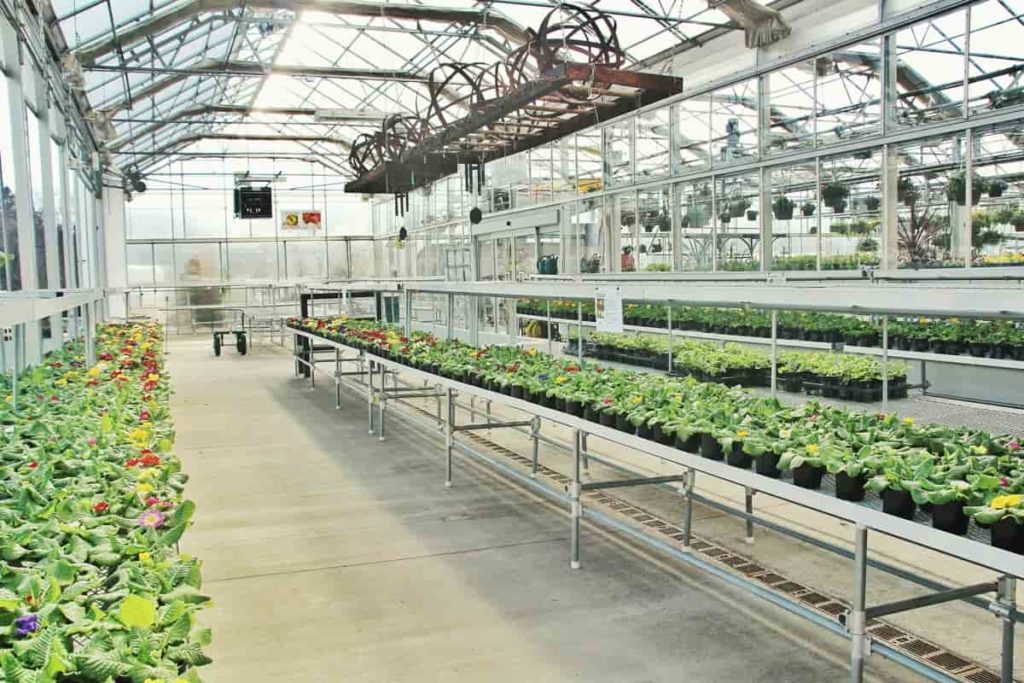
Let’s understand more about a polyhouse
Polyhouse culture is a deeply rooted practice intended for independence. The fundamental thought behind polyhouse agriculture is developing multiple plants on a single platform. Some plants give normal insect poisons that get bugs far from adjoining crops. While others are more defenseless yet, they produce better results when developed close to harmful plants.
- A poly-tunnel or Polyhouse cultivation is a rural covering. On the other hand, its structure reaches out for a minimum piece of its length over the ground level.
- It’s generally developed from exciting sheet steel supported by timber, concrete, block, stone, or plastic dividers.
- Poly-burrows are especially famous with market nursery workers and portion cultivators as they give shelter to their harvests over winter. Also, they expand seasons and help in better crop production.
- They permit prior planting times because of suitable temperatures and control vermin that favor cool conditions.
Benefits of polyhouse and merits of polyhouse growing
After taking proper guidance, Polyhouse is done in the right manner and proves to be profitable. In general, the cost of setting up the Polyhouse seems high and expensive. But if you build it in the right way, you’ll reap the amount with interest in the future. Don’t believe in words; here’re the facts and the benefits that prove profitable farming with polyhouse.
1. Less damage and maintenance
Polyhouse farming in India causes lesser damage to the plants and crops. Farmers grow these plants under their proper observation. They control all the factors to save the plants from getting ruined, so the chances of damaging these crops are quite less.
2. Reaps high-quality plants and crops
The farmer and the observer control all the essential parameters while planting the crops and all the factors to save the plant. The plant’s care from the proper observation makes it high in quality and delivers a good profit in the market.
In case you miss this: Organic Gardening Tips, Tricks, Ideas, and Techniques

3. This type of farming can be done in all seasons
When we talk about the next benefits without worrying about any particular season, this can be done anytime. The plantation is done at home under the observer, so it benefits from doing it at any time. This gives more profits to the one doing Polyhouse farming in India.
4. Cost-effective
The Polyhouse farming process is cost-effective compared to other man-made processes, as it requires a one-time investment and gives profits for a long time.
5. Simple to follow
It is one of those few farming techniques that are easy and convenient to follow and maintain. Even beginners can do this without any problem.
6. Nature-Friendly
Man-made techniques of growing plants and crops have affected Mother Nature badly. Now it’s time to make efforts and save it. Polyhouse farming in India becomes beneficial to saving the environment with minimal natural resources.
In case you miss this: Organic Backyard Vegetable Gardening
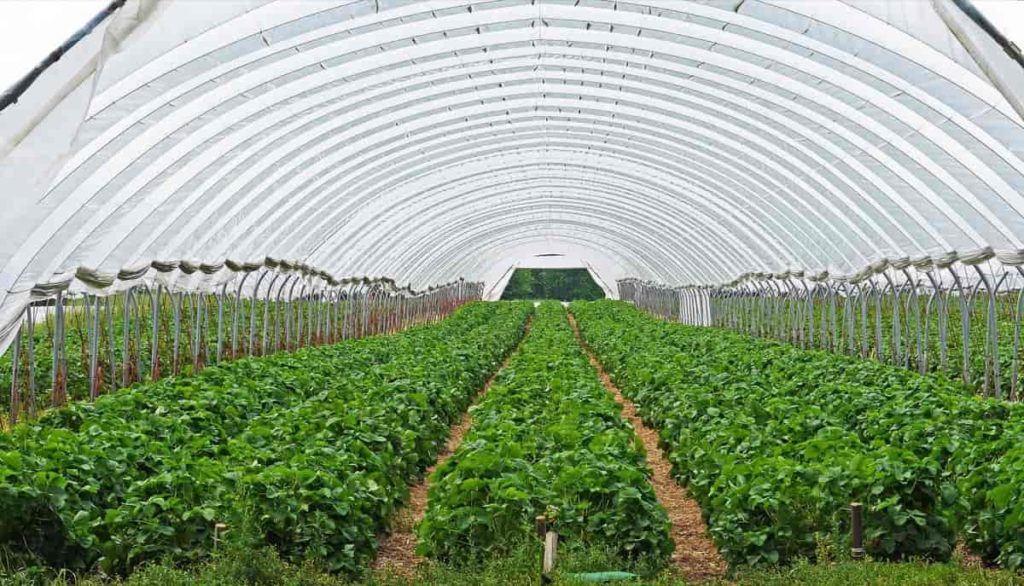
Conclusion
Based on the above benefits of Polyhouse farming in India, it wouldn’t be inappropriate to say that the strategy has far to go and holds a bright future. The cycle is amazingly beneficial for the individuals who like and trust natural farming over anything else. Cool. Right? What do you say? Feel free to comment with your views and join the discussion.
- Broccoli Seed Germination and Selection
- Asparagus Seed Germination and Variety Selection
- Seasonal Flower Gardening: Best Practices for Spring, Summer, Fall, and Winter
- How to Grow Hibiscus from Flower
- Plantation Ideas for Home Decoration: A Beginners Guide
- Flower Garden Designs and Layouts for Beginners
- Planting and Spacing Techniques in Papaya: A Beginner’s Guide
- Growing Gold: Essential Techniques for Planting Pineapples
- How to Make Kalanchoe Plant Bushy: Home Remedies and Solutions
- 11 Reasons Why Your Gardenia is Not Blooming: Home Remedies and Solutions
- Eco Elegance: The Guide to Designing a Drought-Tolerant Landscape
- Gardening on a Slope: Strategies for Hillside Landscaping
- Nourish and Flourish: Top Organic Mulches for Thriving House Plants
- Everything You Want to Know about Indian Mogra Flower: Discover Uses and Growing
- Green Thumb Success: Expert Tips for Cultivating Greenhouse Pumpkins All Year Round
- Maximize Growth & Flavor: The Ultimate Guide to Companion Planting in Herb Gardens
- How to Control Rhododendron Problems Naturally: Home Remedies and Organic Ways to Fix Them
- Natural Magic: The Remarkable Benefits of Cinnamon for Plants
- Best Steps to Revive Dying Tulip with Natural and Organic Treatment
- 10 Reasons Why Your Angel Trumpet is Not Blooming: Remedies and Treatment
- How to Fix Periwinkle Leaf and Flower-Related Problems: Natural Remedies and Solutions
- How to Fix Zinnias Leaf and Flower Problems: Discover Natural and Home Remedies
- Organic Steps to Induce Lemon Tree Flowers: A Comprehensive Guide
- Bloom Booster: Crafting the Perfect Homemade Bougainvillea Fertilizer
- Optimizing Growth: A Guide to Applying NPK Fertilizer for Potted Plants
- 10 Best Homemade Fertilizers for Rubber Plant: DIY Recipes and Application Method
- How to Boost Female Pumpkin Flowers: Effective Steps for More Flowers and High Yields
- Transform Your Indoor Garden: Top Benefits of Pink Salt for Houseplants
- 10 Best Homemade Fertilizers for Peacock Plants (Calathea): Easy DIY Guide
- Unlock Blooms: 9 Reasons Why Your Potted Chrysanthemum is Not Blooming
- 8 Reasons Why Your Potted Hibiscus is Not Blooming: Fix it with Simple Solutions
- Unlock Blooms: 9 Key Reasons Your Potted Frangipani Won’t Flower
- 10 Reasons Why Is My Ice Plant Not Blooming: Remedies and Treatment
- 10 Reasons Why My Potted Hydrangea Not Blooming: Treatment and Remedies
- 10 Reasons Why is My Wisteria Not Blooming: Remedies and Treatment